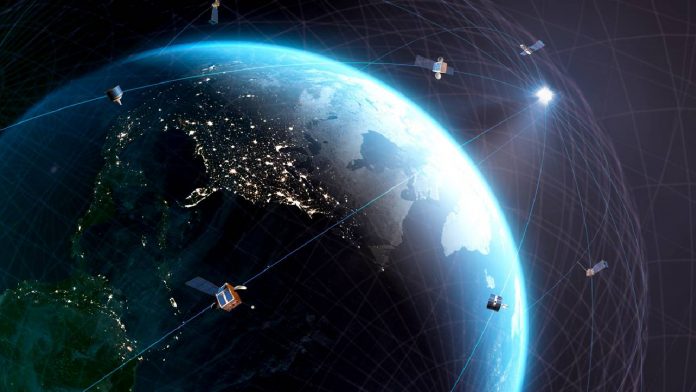GPS has transformed everything from driving to search and rescue. But it currently relies on government-run satellites that have trouble peering into canyons and forests—and which can be targeted by enemy countries. Now, engineers have demonstrated rudimentary location tracking by eavesdropping on signals sent by internet satellites. If refined to GPS levels of accuracy, the approach could help scientists who use GPS to track animals and earthquakes.
“Any advance that offers an improvement to what scientists are currently doing will be welcomed,” says Richard Langley, a geodesist at the University of New Brunswick, Fredericton, who studies GPS but was not involved in the work.
In recent years, private companies have started to launch enormous satellite constellations in an effort to bring broadband internet to far-flung places. Perhaps the most famous is Starlink, a project operated by rocket company SpaceX.
These orbiting internet nodes fly closer to Earth’s surface than the satellites in the government-run global navigation systems, such as the U.S. Department of Defense’s GPS, the European Union’s Galileo, China’s BeiDou, or Russia’s Global Navigation Satellite System. Because militaries operate many of the systems, the signals can be targets for jamming or scrambling—spurring researchers to look for alternatives.
“I want to get to a point where I can say, ‘No GPS, no problem,’” says Zak Kassas, an electrical engineer at Ohio State University, Columbus.
He and his colleagues have previously demonstrated location tracking using satellites from the communications companies Orbcomm and Iridium Communications. Now, they have moved on to Starlink, which has one of the most extensive networks with more than 1700 satellites launched to date.
As one of these craft flies overhead, it beams out a radio signal containing data for ground-based receivers. Using their own small receiver, Kassas and his team picked up these electromagnetic waves. Without decrypting any information about the YouTube videos or bank details being sent, they looked at the overall shape of the signals to determine the distance to the satellite.
As a satellite moves relative to a stationary observer, the waves of its signals compress and elongate, like the siren of a passing ambulance, in what’s known as the Doppler effect. By measuring this effect for six Starlink satellites flying overhead on different trajectories, the scientists could pinpoint their location on the ground to within 7 to 8 meters, they reported last week at the annual Institute of Navigation GNSS+ meeting in St. Louis. (The team will also publish its findings in an upcoming issue of IEEE Transactions on Aerospace and Electronic Systems.)
The accuracy isn’t as good as traditional GPS, which can have submeter precision. But Kassas and his team expect to improve, as the Starlink constellation grows and the receivers can track more satellites. SpaceX wasn’t involved in the research and can’t do much to try to block such techniques, though it’s unclear whether it would try. The company did not respond to requests for comment for this article.
Because the satellites of internet megaconstellations fly so much closer to Earth than those used in traditional GPS, their signals can be thousands of times stronger. This could make them easier to pick up in dense jungle environments where GPS sometimes struggles to determine position, Langley suggests. The brighter signals might also allow for better data collection of animals outfitted with tracking collars, he adds.
Geophysicists also use GPS to monitor tiny movements in the crust that can point to earthquakes or eruptions. Because internet constellations use even shorter electromagnetic waves than GPS satellites, they in theory could be used for higher resolution measurements, says Mark Psiaki, an aerospace engineer at the Virginia Polytechnic Institute and State University who wasn’t involved in the work. “Maybe we can tell if Japan has moved closer to us because of an earthquake not by a centimeter, but by a tenth of a millimeter.”
Psiaki points out that owners of these internet satellites could one day decide to include particular signals that would make it easier for scientists to use them as GPS systems.
Astronomers aren’t big fans of satellites because they interfere with their observations of the night sky. But Kassas is eager to see additional satellites deployed, because that will improve their tracking algorithms.
“We’re anxiously waiting for SpaceX to launch more of those birds.” -The article was first published by www.science.org
































